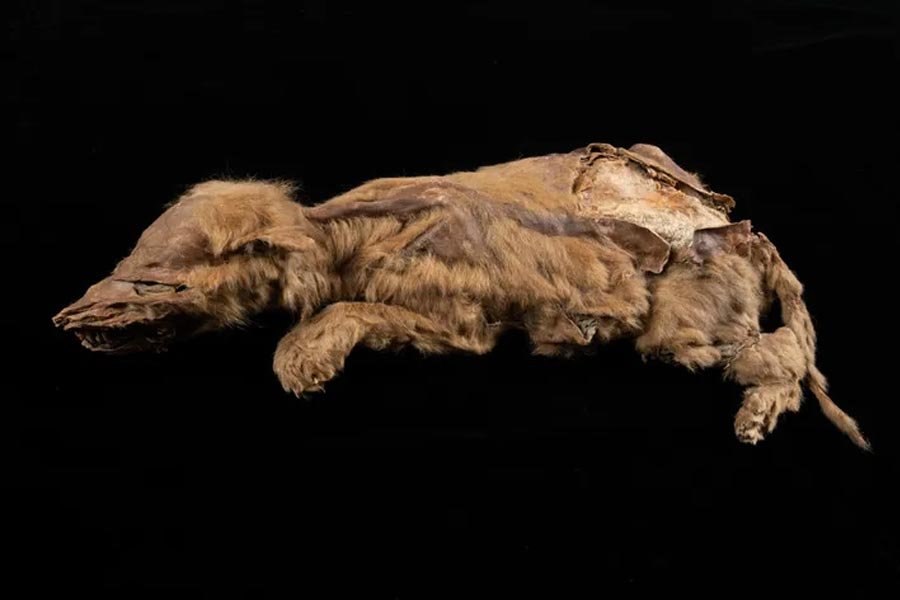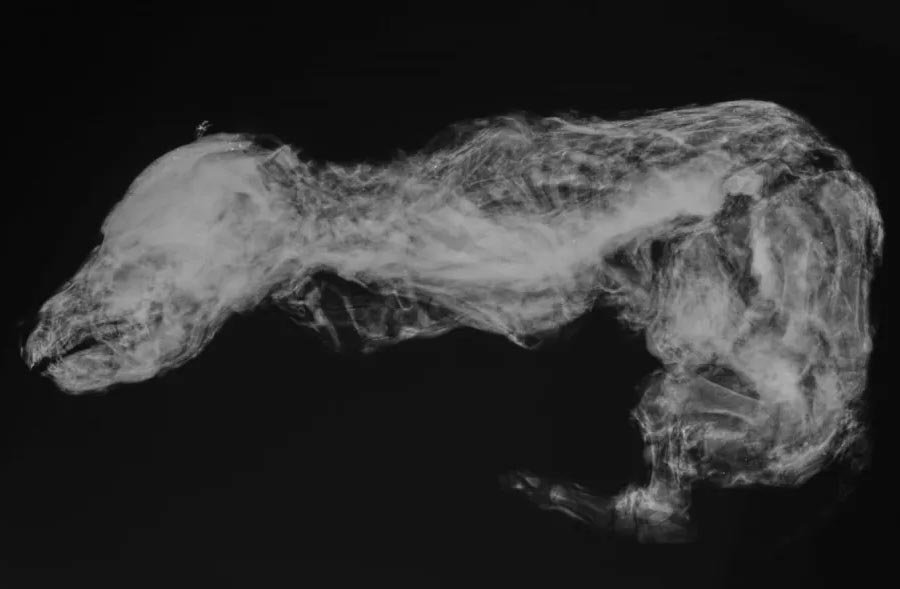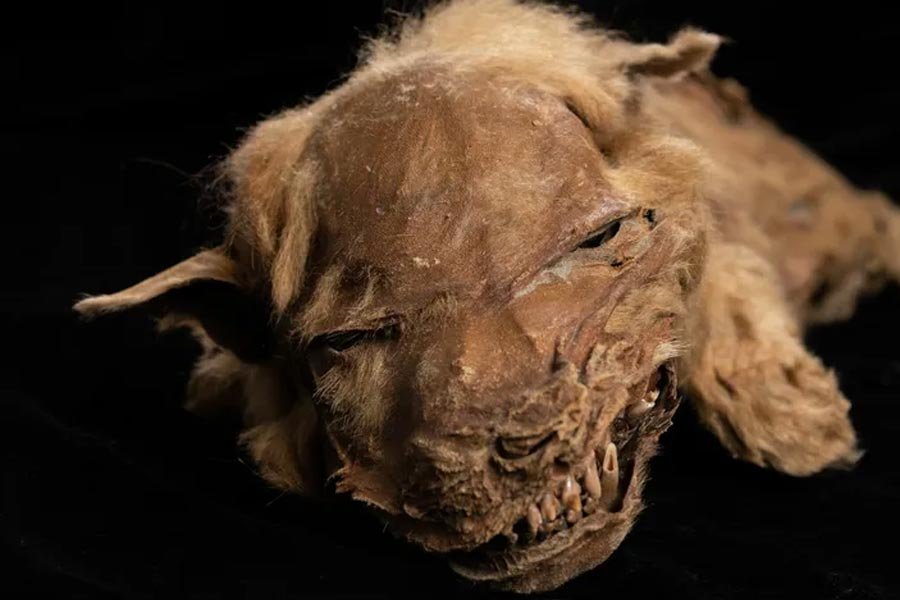“She’s the most complete wolf specimen ever found from the ice age… All her soft tissue, her hair, her skin, even her little nose is still there. She’s just complete. And this is really rare.”

In 2016, a gold miner in Canada’s Yukon Territory discovered an unexpected treasure while melting out permafrost to discover whatever riches might be found inside. The wolf pup – dubbed ‘Zhùr’ which translates from a local language to wolf. Much of Zhur has remained intact after tens of thousands of years, from the fur of her coat to the delicate papillae on her tongue.
Neil Loveless, the gold miner then quickly placed the frozen pup in a freezer until the experts could have a look. The paleontologists found that the well-preserved animal was a juvenile female. It belonged to a part of a vanished ecosystem dating to a time when northwestern Canada was home to American mastodons and another Pleistocene megafauna.
Aside from the fact that it is the most complete ice age wolf ever discovered, the young pup’s mummy was also particularly important to researchers because it was uncovered in North America.
According to the paleontologist, Des Moines, “Preservations like this is fairly common because of the way the permafrost preserves things there, which is way less common in the Yukon, Alaska, and other parts of North America.”
“The preservation looks amazing, There is more to Zhur than what can be seen with the naked eye. She tells us a lot,” says University of Copenhagen Paleontologist Ross Barnett.

Ever since Neil Loveless, the gold miner discovered the puppy, an international team of scientists has been working to develop a sense of the wolf’s life, and the results are not what they were expecting.
In a recent study published in the journal Current Biology, the scientists say that they’ve developed a detailed sense of the young wolf’s physiology
Several analyses including radiocarbon dating, DNA sampling, and measurements of levels of different versions, or isotopes, of oxygen, confirmed how old was the pup was and when the pup died. X-rays of the skeleton and the teeth also revealed that Zhur was only 7 weeks old when she met her end.
Julie Meachen and her colleagues reconstructed Zhur’s mitochondrial genome and found similarities with both Beringian wolves, an extinct group that lived in ancient Yukon and Alaska, and Russian grey wolves.
“When I looked at the X-rays and could see her intestines, that gave me a little thrill, I’d never seen 57,000 old intestines before.” However, the team reconstructed Zhur’s diet by bone analysis, not by her stomach contents.
However, the mystery still remains that how she was mummified and why she ended up alone?

As for how the pup died, the scientists think Zhur died when her den collapsed on top of her. That would help explain why the remains are in such stellar conditions. But the question still remains as to why the pup was alone when she died? What about the rest of her family, considering her age, it seems unlikely that she would even be in the den alone without her mother or her siblings.
“Maybe the mum and sibling were outside the den when it collapsed and that is why Zhur was left on her own inside the den, said Julie Meachen. It is possible she was an only pup, but that would be rare, usually, wolves have several pups at a time, but it is still impossible to tell for sure.”
Thanks to the analyses, the scientists have been able to determine what she ate during her short seven week-long life. It was fed on mostly aquatic food. The scientists were also able to determine the pup comes from two different lineages; Russian grey wolves and Beringian wolves, an extinct group from the Yukon and Alaska.
“We see bones all the time, but when you have something with flesh and skin and hair, you realize this was an animal that was running around 60,000 years ago, eating salmon in this landscape that’s familiar yet totally strange,” said Grant Zazula, a Government of Yukon paleontologist.
“We are always excited when we make discoveries like these”, Meachen said, “but it is an indication that the world is warming and that’s not good for our environment. The planet is hurting.”











